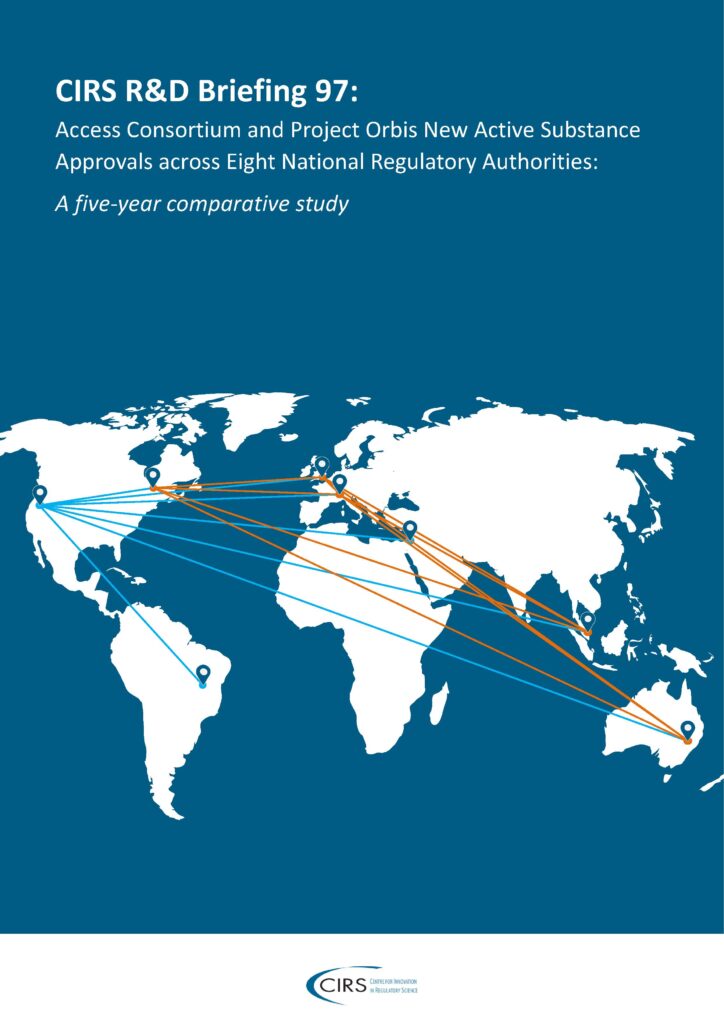This R&D Briefing builds upon the Centre for Innovation in Regulatory Science (CIRS)’s long-standing efforts to examine trends and practices in regulatory approvals. For over 20 years, CIRS has been conducting annual analyses of new active substance (NAS) approvals by six major regulatory agencies, providing a comprehensive view of regulatory performance over time.
These analyses have highlighted, among other facilitated regulatory pathways (FRPs), the inception and progress of the Access Consortium and Project Orbis —two prominent frameworks designed to expedite patient availability to innovative medicines by leveraging shared regulatory activities across different jurisdictions— as documented in CIRS R&D Briefings 77, 81, 85 and 93.
This briefing focuses on the Access Consortium and Project Orbis since both frameworks aim to enhance international collaboration among regulatory authorities but differ in their implementation strategies, therapeutic focus, and scope.
These differences grant an interesting opportunity to assess their impact on regulatory processes and timelines. At the same time, both models are fostering trust among stakeholders and represent a shift towards more FRPs that enable timely global approvals of innovative therapies.
Through this analysis, CIRS aims to provide insights that feed into the continuous improvement process of pharmaceutical product development, regulation, and patient access to innovative therapies. It also aims to be seen as a resource for stakeholders navigating the evolving regulatory landscape.
Data collection and sources
- CIRS Regulatory Review Timelines Database (RRTD): Proprietary data collected and maintained by CIRS, providing structured information on regulatory review performance for New Active Substances.
- Publicly available information: Data from regulatory agency websites, including annual reports, official announcements, and downloadable databases.
- Direct engagement with regulatory agencies: Targeted interactions with scoped agencies to verify information, clarify regulatory processes, and supplement publicly available data.
Conclusion
The overall result of this study indicates that Access Consortium and Project Orbis have been effective at enhancing international collaboration and have reduced submission gaps and approval times for NASs, while expanding their therapeutic reach among participating regulatory agencies. Continuous measurement is therefore essential to refine these frameworks, address disparities, and optimise their effectiveness, ensuring they remain robust mechanisms for timely availability to innovative therapies worldwide.
Please cite this article as: Centre for Innovation in Regulatory Science (2024) R&D Briefing 97: Access Consortium and Project Orbis New Active Substance Approvals Across Eight National Regulatory Authorities. A Five-Year Comparative Study. Centre for Innovation in Regulatory Science. London, UK.
Questions?
If you have any questions or comments on this study, please get in touch with Dr Magda Bujar: mbujar@cirsci.org

